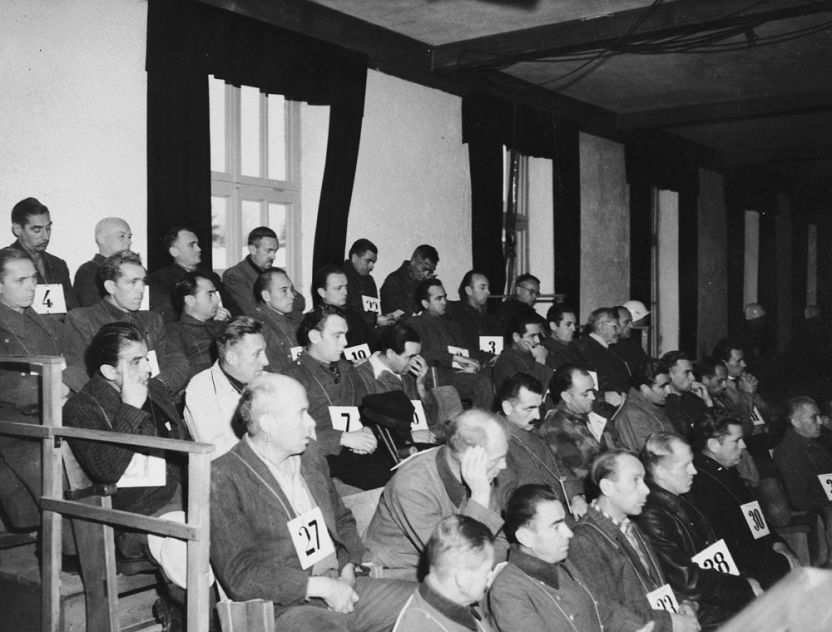The Dachau concentration camp was liberated by American troops on 29 April 1945. When the soldiers saw the condition of the prisoners, they immediately executed more than a hundred of the camp's guards. On 30 October, the US Army Joint Chiefs of Staff issued an order for a tribunal to be held over the employees of the Dachau concentration camp. On 13 December, the tribunal handed down its judgments.
By Ekaterina Chernetskaya - The camp at Dachau, about 20 kilometres northwest of Munich, was the first concentration camp established by the Nazis. On 13 March 1933, the Chief of Police in Munich, Heinrich Himmler, issued a decree to establish the camp on the premises of an abandoned factory. On 22 March, the first 150 inmates, largely political opponents of the Nazis, were brought to Dachau.
Dachau was the only long-term and permanent concentration camp on German soil. Nazi propaganda presented it as a model place for re-education. The camp's infrastructure was completed by 1937 and remains in place to this day. When World War II broke out, German political prisoners were joined by representatives of other countries and prisoners of war. One of these was the brother of Roman Rudenko, the chief prosecutor for the USSR at the Nuremberg Trials – Nikolai Rudenko, who was lucky enough to stay alive until his rescue. Out of the 200,000 people imprisoned at Dachau in different years, according to official data, 41,500 were executed on the camp premises, not counting those transferred to “real” death camps.
After its liberation, the camp became a detention centre for former guards and torturers. German prisoners of war and identified SS-men were held here.
On 15 November 1945, at 10 a.m., 40 concentration camp officers were tried on the grounds of the Dachau camp, marking the start of the so-called “camp trials”. The Allies and the new German government conducted a total of 121 "camp trials" of concentration camp staff and collaborators.
The defendants were assigned numbers to sit with throughout the trial. The court tried the former commandant of the Dachau concentration camp, Martin Weiss, heads of different departments, doctors, three collaborators, and several camp guards. The main charges were war crimes against Allied prisoners of war and civilians. Several defendants were directly accused of torturing and killing prisoners, participating in executions and carrying out medical experiments.
On 13 December 1945, the American Military Tribunal reached its verdict: 36 of the defendants were sentenced to death by hanging, the head of the office – to life imprisonment, while three camp guards – to 10 years' imprisonment and forced labour. Of these, 28 “death row inmates” were executed at the Landsberg Prison on 28 and 29 May 1946. The other eight had their sentences commuted to imprisonment.
Among those sentenced to death was Friedrich Wetzel (number 40 during the trial), the former camp quartermaster. His sentence was later commuted to 10 years' imprisonment. After release from prison, his fate is unknown.
























